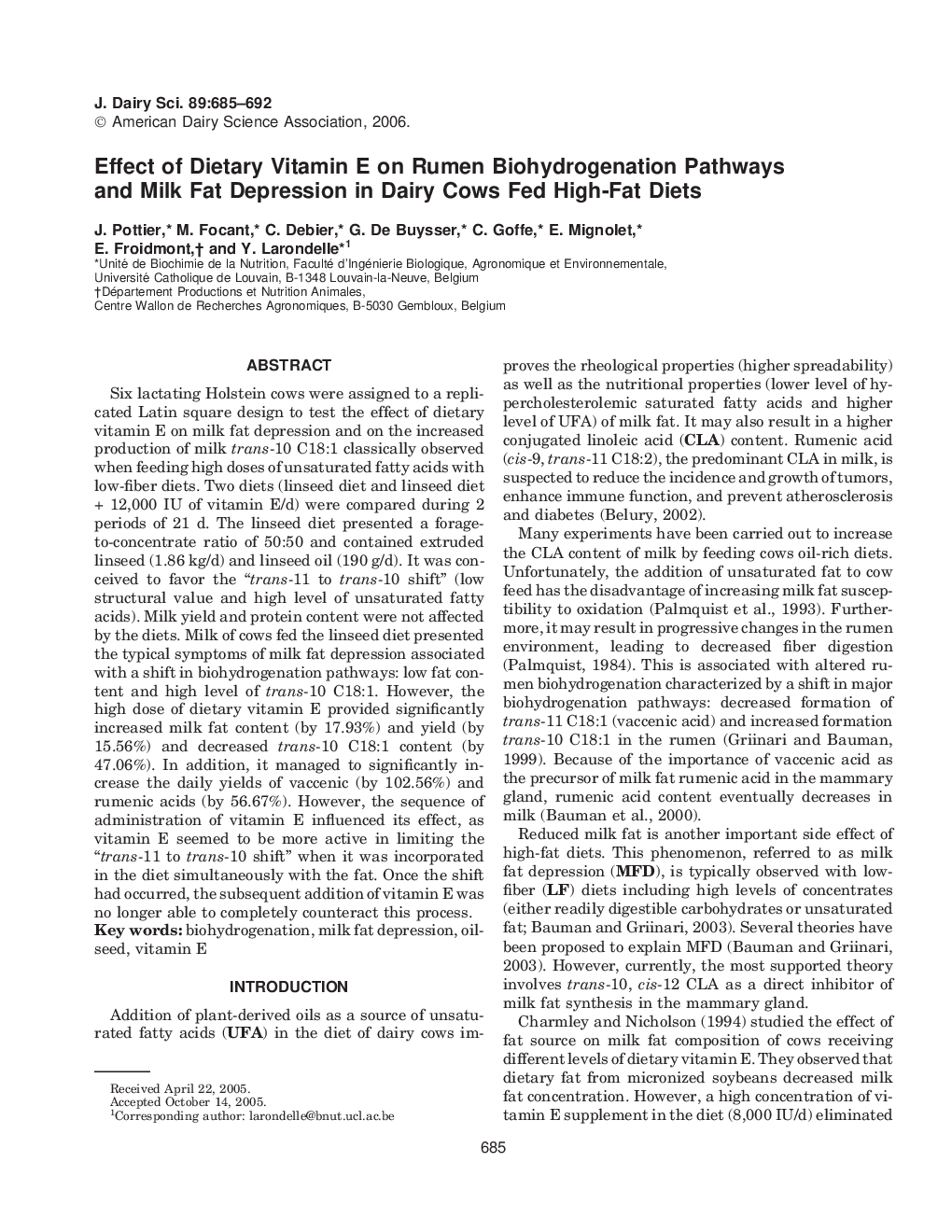| Article ID | Journal | Published Year | Pages | File Type |
|---|---|---|---|---|
| 2441222 | Journal of Dairy Science | 2006 | 8 Pages |
Abstract
Six lactating Holstein cows were assigned to a replicated Latin square design to test the effect of dietary vitamin E on milk fat depression and on the increased production of milk trans-10 C18:1 classically observed when feeding high doses of unsaturated fatty acids with low-fiber diets. Two diets (linseed diet and linseed diet + 12,000 IU of vitamin E/d) were compared during 2 periods of 21 d. The linseed diet presented a forage-to-concentrate ratio of 50:50 and contained extruded linseed (1.86 kg/d) and linseed oil (190 g/d). It was conceived to favor the “trans-11 to trans-10 shift” (low structural value and high level of unsaturated fatty acids). Milk yield and protein content were not affected by the diets. Milk of cows fed the linseed diet presented the typical symptoms of milk fat depression associated with a shift in biohydrogenation pathways: low fat content and high level of trans-10 C18:1. However, the high dose of dietary vitamin E provided significantly increased milk fat content (by 17.93%) and yield (by 15.56%) and decreased trans-10 C18:1 content (by 47.06%). In addition, it managed to significantly increase the daily yields of vaccenic (by 102.56%) and rumenic acids (by 56.67%). However, the sequence of administration of vitamin E influenced its effect, as vitamin E seemed to be more active in limiting the “trans-11 to trans-10 shift” when it was incorporated in the diet simultaneously with the fat. Once the shift had occurred, the subsequent addition of vitamin E was no longer able to completely counteract this process.
Related Topics
Life Sciences
Agricultural and Biological Sciences
Animal Science and Zoology
Authors
J. Pottier, M. Focant, C. Debier, G. De Buysser, C. Goffe, E. Mignolet, E. Froidmont, Y. Larondelle,
